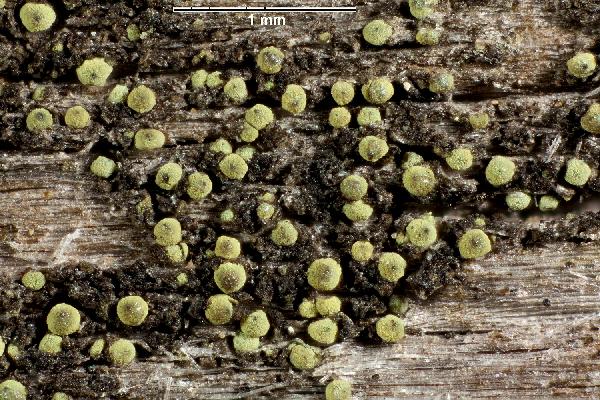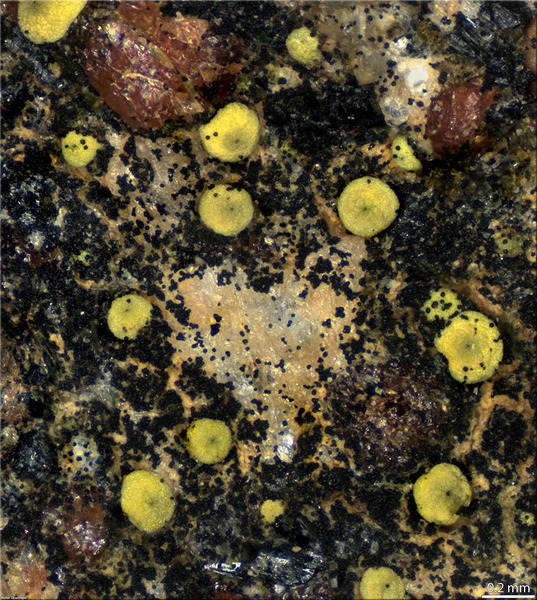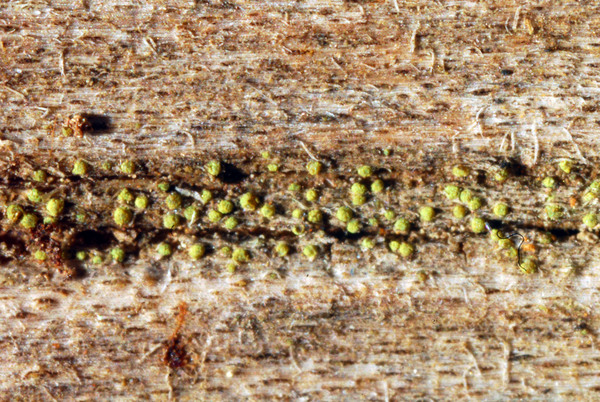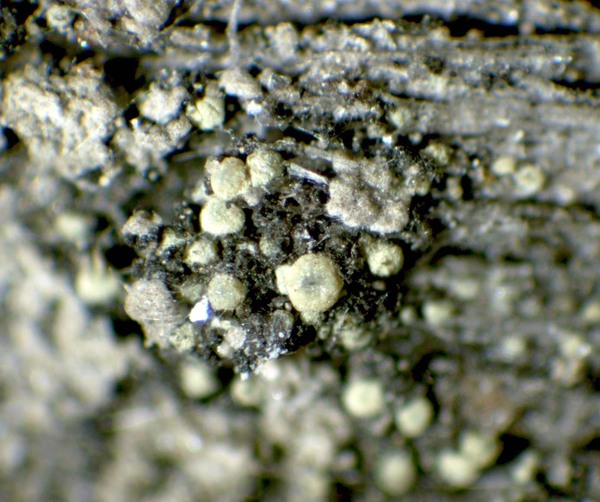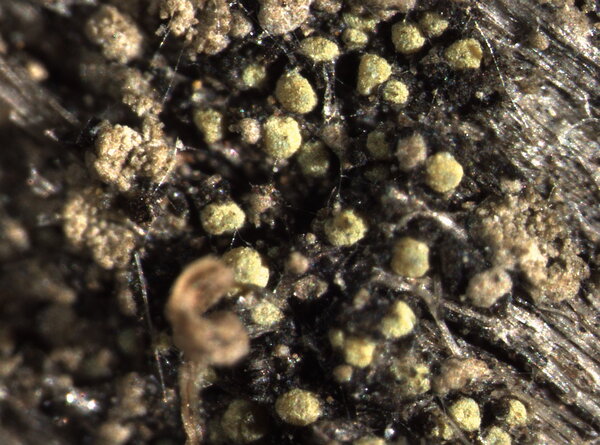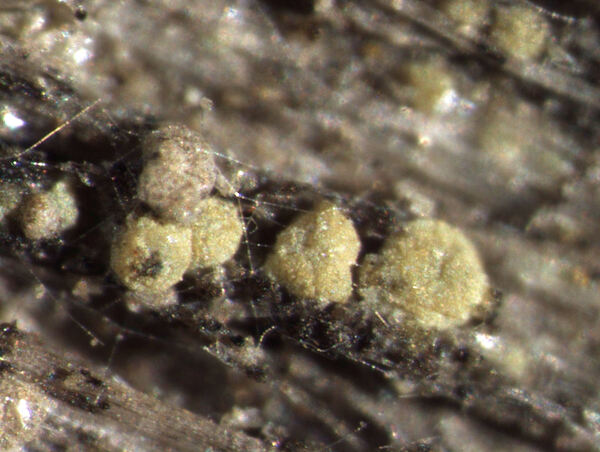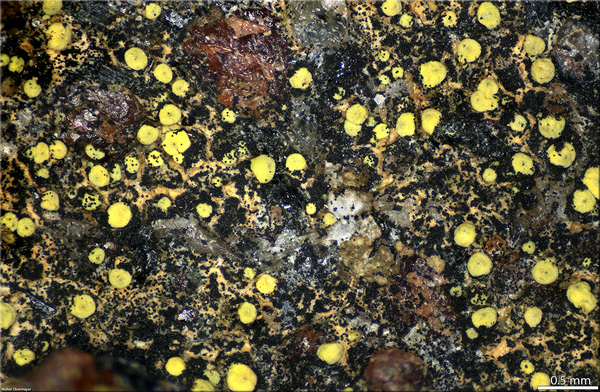Thelocarpon laureri (Flot.) Nyl.
Mém. Soc. Imp. Sc. Nat. Cherbourg, 3: 191, 1855. Basionym: Sphaeropsis laureri Flot. - Bot. Z., 5: 65, 1847.
Synonyms: Thelocarpon interceptum Nyl.; Thelocarpon prasinellum Nyl.
Distribution: N - TAA (Hafellner 1995, Nascimbene & al. 2007b). S - Cal (Puntillo 1996).
Description: Thallus crustose, mostly reduced to small, 0.15-0.4 mm wide and up to 0.25 mm tall, bright greenish yellow-pruinose, scattered, hemispherical to flattened fruiting warts. Ascocarps frequent, perithecioid, immersed in the warts, with a concave, not exposed disc (the warts opening through a small apical pore), the ostiole sometimes darker. Exciple colourless, with an algal sheath reaching the apex, the outermost part devoid of algae and forming a 8-15 μm thick pseudocortex of vertically oriented hyphae; hymenial gel I+ red (I+ blue at low concentrations of iodine); paraphyses distinctly branched and anastomosing, not apically thickened, as long as the asci; subhymenium amyloid. Asci 50-100-spored, flask-shaped, tapering to apex, thin-walled, persistent, the wall I+ pale blue, I+ yellow-red at the base, the apex slightly thickened and with a darker I+ blue ring-structure within. Ascospores 1-celled, hyaline, subglobose to broadly ellipsoid, thin-walled, 2-4(-6) x 1.2-2 μm. Pycnidia rare, immersed in small warts, with a colourless wall. Conidia oblong-obtuse. Photobiont chlorococcoid. Spot tests: K-, C-, KC-, P-. Chemistry: yellow pruina with pulvinic acid derivatives.Note: an ephemeral early coloniser of different substrata, including roofing tiles, rotten wood, and soil; perhaps more widespread, but very much overlooked.
Growth form: Crustose
Photobiont: green algae other than Trentepohlia
Reproductive strategy: mainly sexual
Pioneer species
Commonnes-rarity: (info)
Alpine belt: absent
Subalpine belt: rare
Oromediterranean belt: extremely rare
Montane belt: very rare
Submediterranean belt: absent
Padanian area: absent
Humid submediterranean belt: absent
Humid mediterranean belt: absent
Dry mediterranean belt: absent
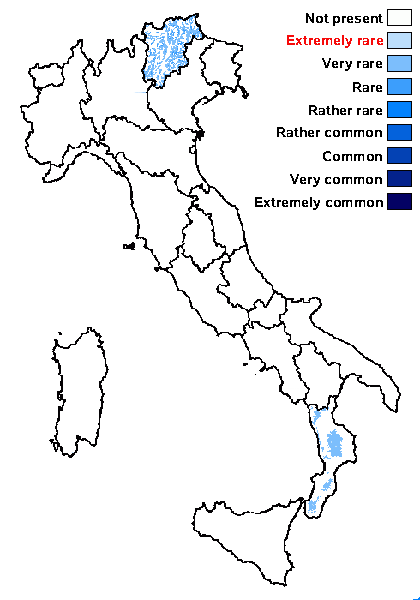
Predictive model
Herbarium samples
Growth form: Crustose
Photobiont: green algae other than Trentepohlia
Reproductive strategy: mainly sexual
Pioneer species
Commonnes-rarity: (info)
Alpine belt: absent
Subalpine belt: rare
Oromediterranean belt: extremely rare
Montane belt: very rare
Submediterranean belt: absent
Padanian area: absent
Humid submediterranean belt: absent
Humid mediterranean belt: absent
Dry mediterranean belt: absent

Predictive model
| Herbarium samples |
 INDEX FUNGORUM
INDEX FUNGORUM
 GBIF
GBIF
 DOLICHENS
DOLICHENS
